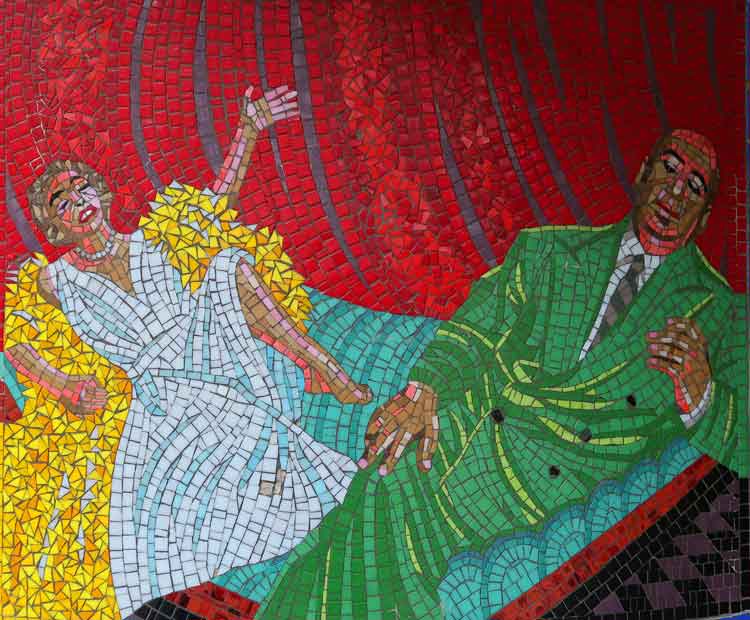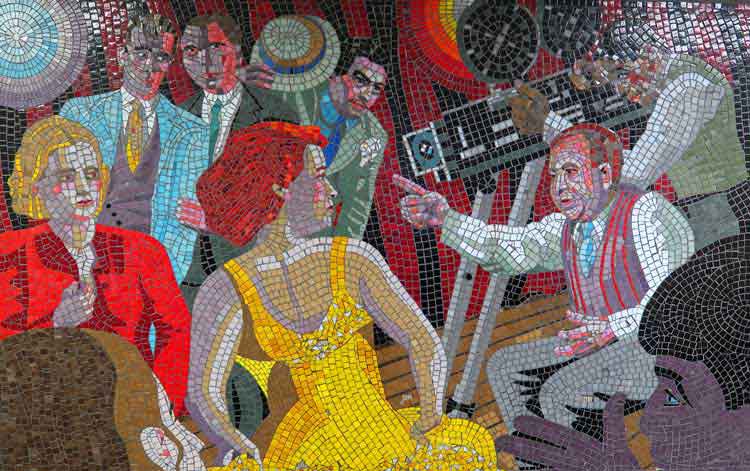
As you enter or leave Leytonstone Underground Station, it's worth slowing your pace right down so that you can take in a wonderful series of mosaics that adorn the walls of the corridor that leads into or out of the station.
Each one depicts a scene from the life and films of the great director, Sir Alfred Hitchcock (1899 - 1980), who, in case you didn't know, was born in Leytonstone on the 13th of August, 1899.
The mosaics - which are made up of more than 80,000 tiny, coloured tiles - were commissioned for the centenary of Hitchcock's birth in 1999.
They were created by the Greenwich Mural Workshop, took seven months to complete, then a few more months to install, the final mural being set in place in April 2001, and the gallery was unveiled on 3rd May, 2001.
The only problem with seeing this wonderful and colourful gallery is that the murals are located in the very busy, and none to wide, corridor that leads into and out of the station.
Consequently, pausing to enjoy the mosaics can prove something of a challenge, since passers-by are not particularly impressed by loiterers blocking their path as they hurry for or from their train.
Still, it is worth shrugging of the disapproval of outraged commuters to get a good eyeful of the tribute to a legendary film director, who is one of the most iconic figures (discounting David Beckham, Damon Albarn Jonathan Ross, and Sir Derek Jacobi) to come out of Leytonstone.
If you would rather not risk the indignation of passers-through Leytonstone station I have done so on your behalf, and below you will find the murals together with the information that each of their accompanying captions displays.
Enjoy.
Alfred Hitchcock as a boy on a horse outside his father's greengrocers shop at 517, The High Road, Leytonstone (circa 1906).
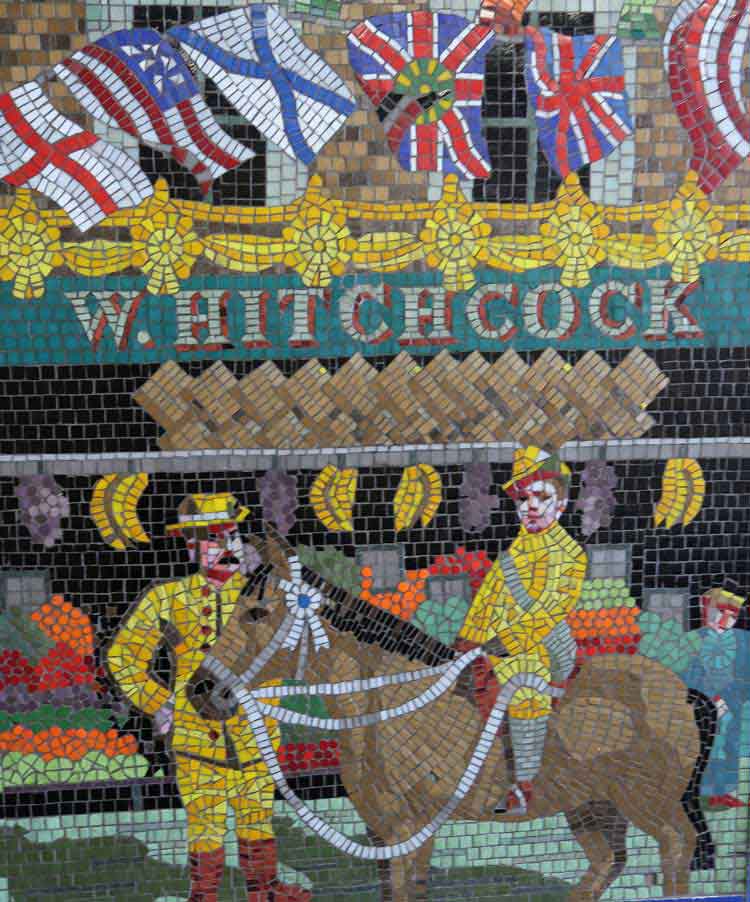
Jewel thieves Brant and Sheldrake - played by Donald Calthrop and Garry Marsh - attempt a getaway to the coast on a stolen train, moments before their high speed chase ends in disaster.
"A lot of movies are about life, mine are like a slice of cake." Alfred Hitchcock.
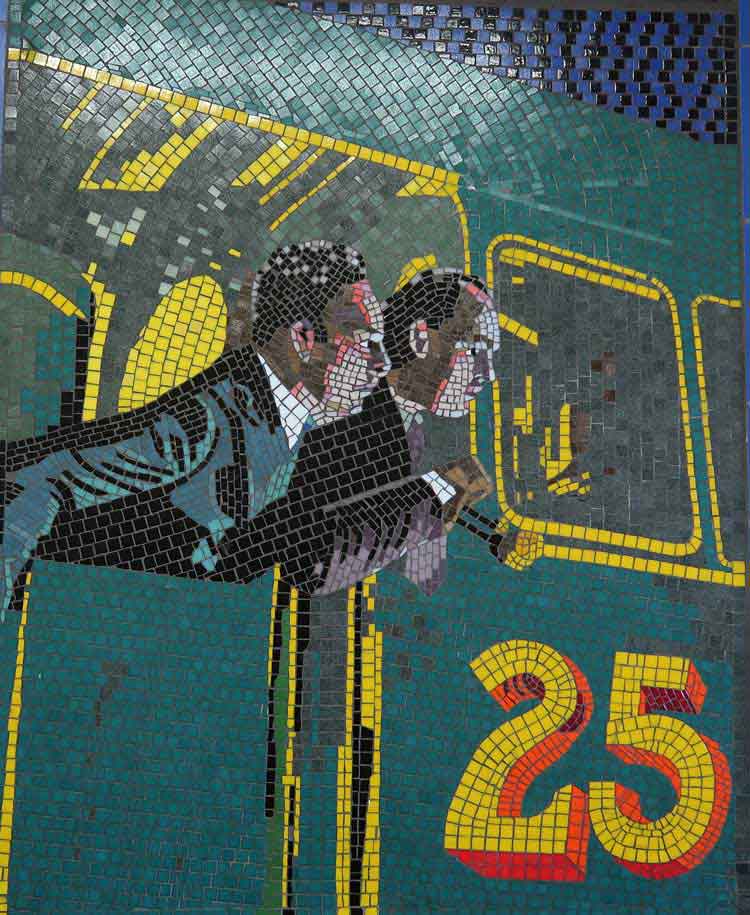
A good old-fashioned melodrama, full of life, death and passion. This was Hitchcock's first feature as sole director and conveys his enthusiasm for the theatre and the music hall.
"Once a man commits himself to murder, he will soon find himself stealing. The next step will be alcoholism, disrespect for the Sabbath and from there on it will lead to rude behaviour. As soon as you set the first steps on the path to destruction you never know where you will end. Lots of people owe their downfall to a murder they once committed and weren't too pleased with at the time."Alfred Hitchcock.
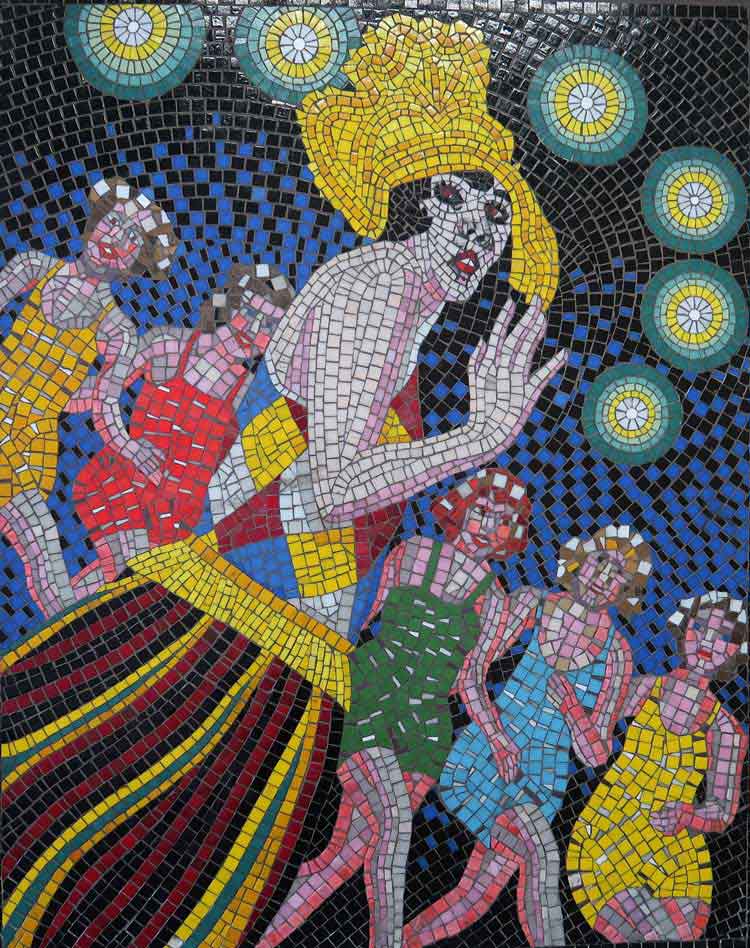
Based on a novel by Patricia Highsmith and co-scripted with Raymond Chandler, this is the story of the psychotic Bruno, brilliantly played by Robert Walker, who suggests exchanging murder victims with Guy, played by Farley Granger, a stranger that happens by chance to share the same train.
"Some people are better off dead - like your wife and my father, for instance." Bruno (Robert Walker).
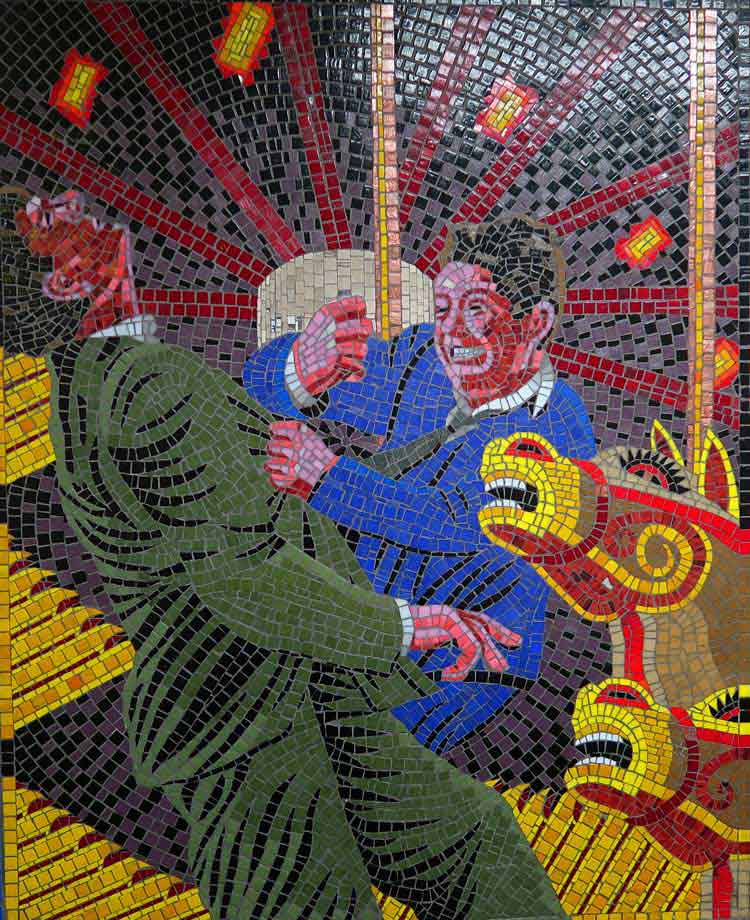
Hitchcock directs Anthony Perkins as Norman Bates, who "goes a little made sometimes", and Janet Leigh as the unfortunate Marion crane before the infamous shower scene.
At the end of Psycho, I realised I'd worked with the director who'd been more open to the actor's suggestions and ideas than any I'd worked with." Anthony Perkins.
"Psycho gave me very wrinkled skin. I was in that shower for seven days...At least he made sure the water was warm." Janet Leigh
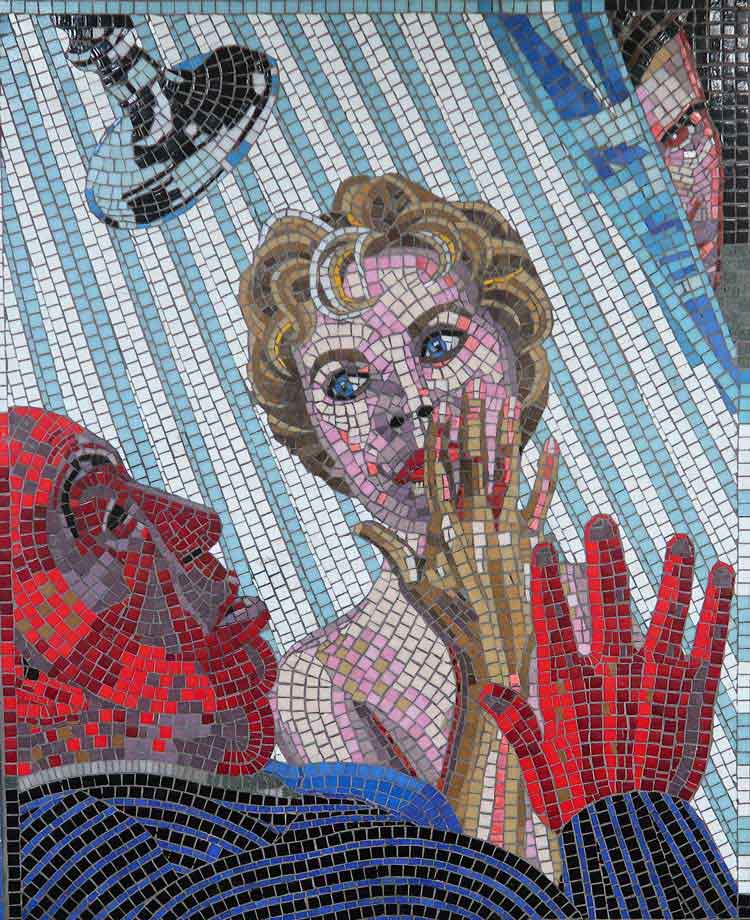
Tom Helmore, as Gavin Elster, and Kim Novak, as Madeline, in Hitchcock's masterly study of love and obsession.
"Hitchcock knew exactly what he wanted to do in this film, exactly what he wanted to say, and how it should be seen and told...And anyone who saw him during the making of the film could see, as I did, that he felt it very deeply indeed."Samuel Taylor, screenwriter.
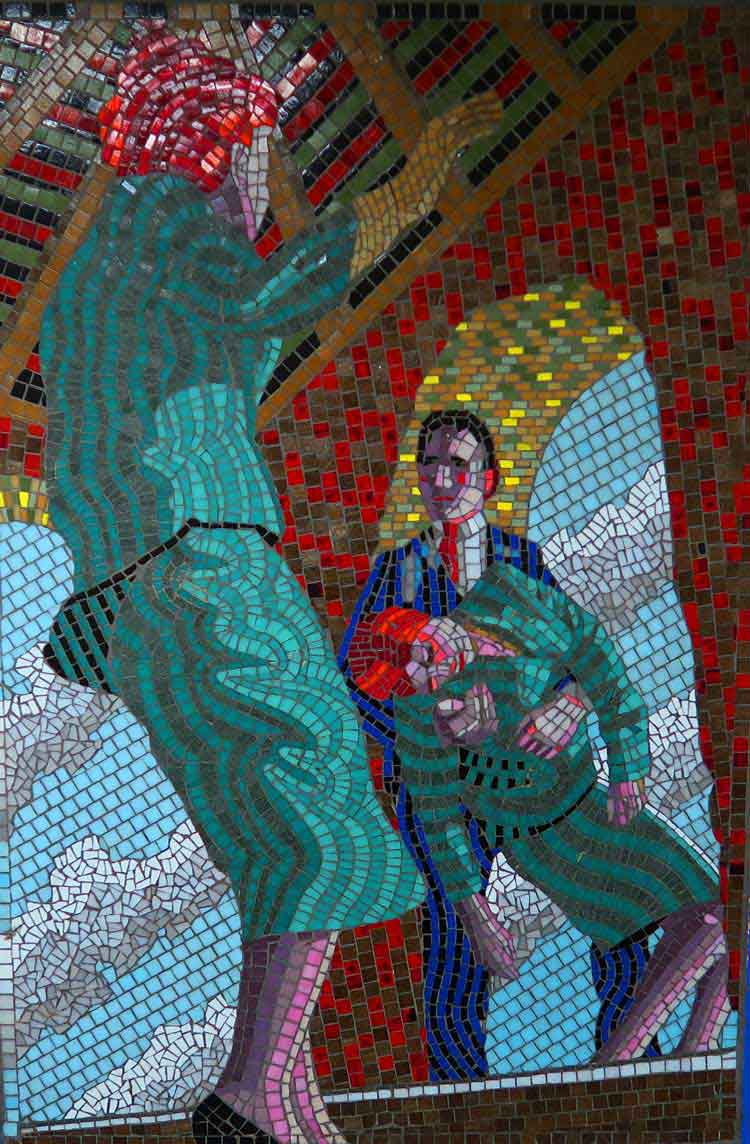
Cary Grant as dubitable playboy Johnny Aysgarth bringing to his young, new wife a drink, which she suspects to be poisoned.
"If you're going to kill someone, do it simply." Johnny Aysgarth.
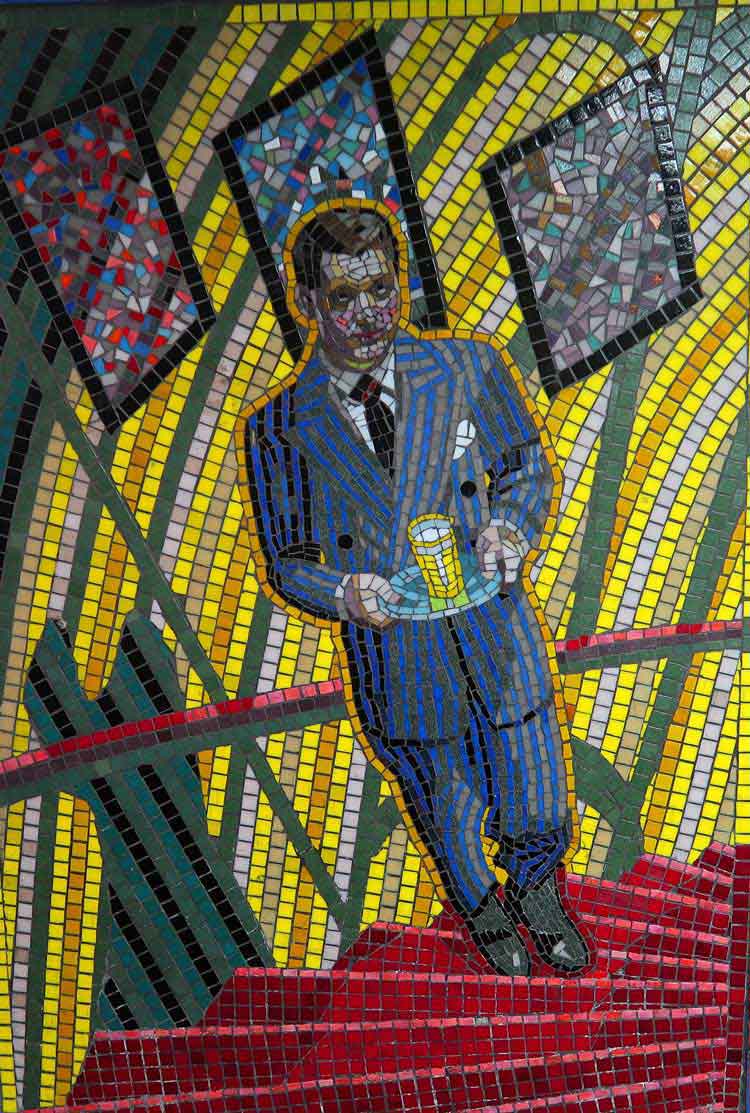
Handcuffed together Robert Cummings, as Barry Kane, and Priscilla Lane, as Patricia Martin, escape from a gang of enemy saboteurs. In the background is the old Leytonstone High Road.
"The drama of a nation stirred to action, of a people's growing realisation of themselves and their responsibilities." Motion Picture Herald.
Tippi Hedren as Melanie Daniels, one of the Bodega Bay residents inexplicably attacked by ever increasing flocks of birds in Hitchcock's apocalyptic allegory.
"Hitchcock captures the subtleties of females warring with each other: all those nuances of knives and guns conducted in looks and body language. He sculpts the human body in space." Camilla Paglia.
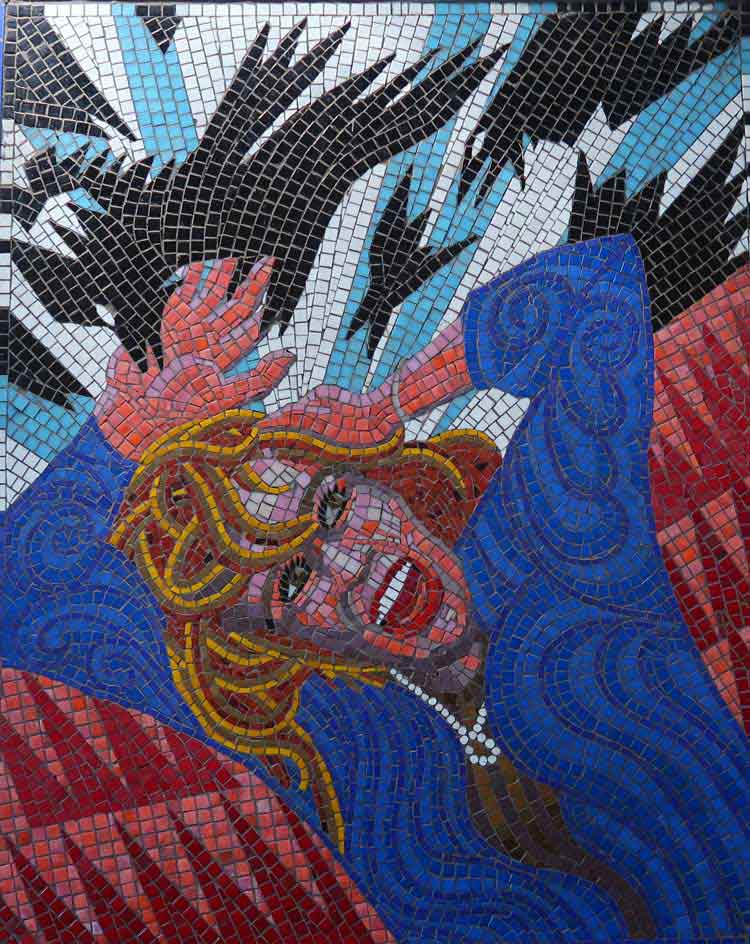
High on a roof, reformed cat-burglar John Robie, played by Cary Grant, is caught against a sky illuminated by fireworks as he attempts to capture the imposter who had been giving him a bad name.
"Hitchcock couldn't have been a nicer fellow. I whistled coming to work on his films." Cary Grant.
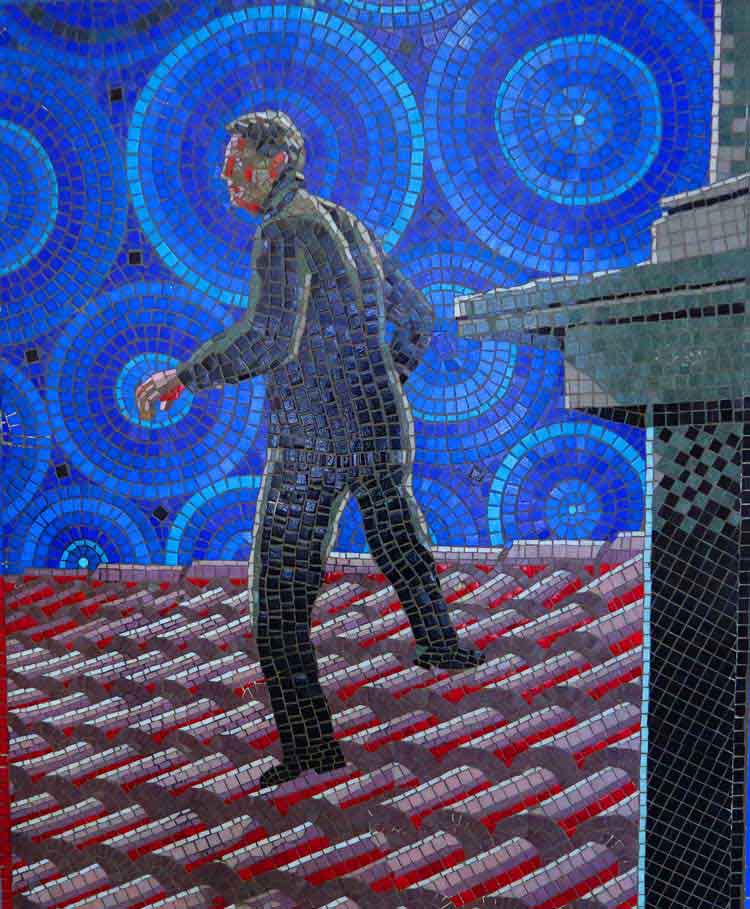
Hitchcock's supreme chase comedy-thriller in which Cary Grant, as urbane businessman Roger Thornhill, is mistaken for a spy, and is pursued across the country by both enemy agents and the police. In this famous scene, his life is threatened by, of all things, a crop-dusting aeroplane.
"It is only when you adopt the basic premise that Cary Grant could not possibly come to harm that the tongue in Hitchcock's cheek becomes plainly visible." Hollis Alpert, Saturday Review.
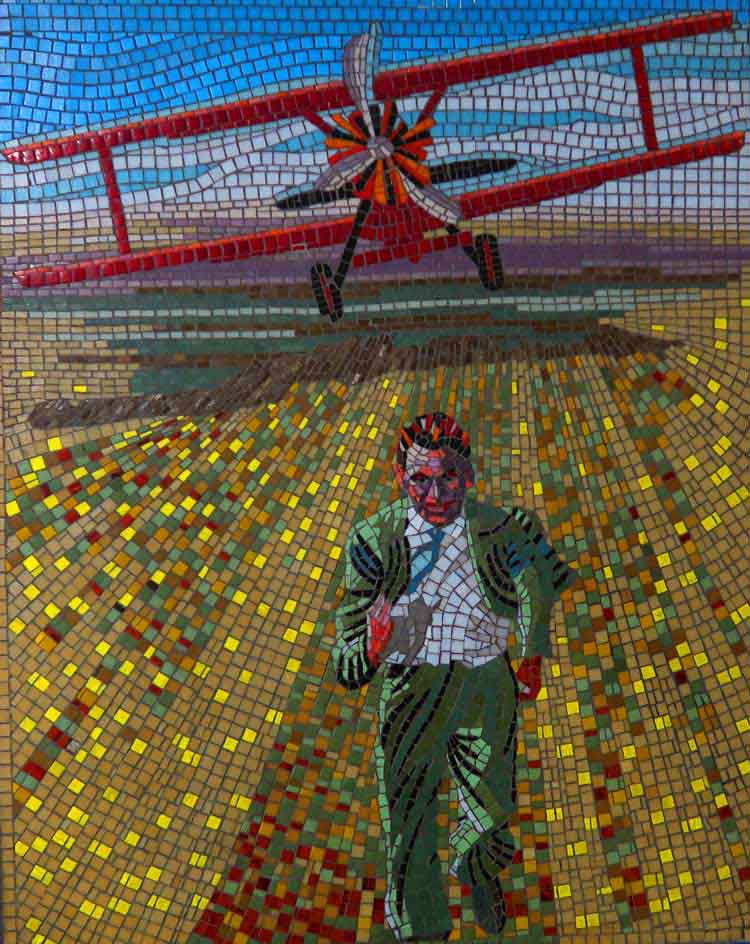
Based on a play by John Galsworthy, the story is about the struggle between the old English way of life and the advance of the factories into the countryside and explores how the country people and the nouveau riche can be equally unscrupulous where property is the goal.
"Hitchcock loves to be misunderstood, because he had based his whole life around misunderstandings." Francoise Truffaut.
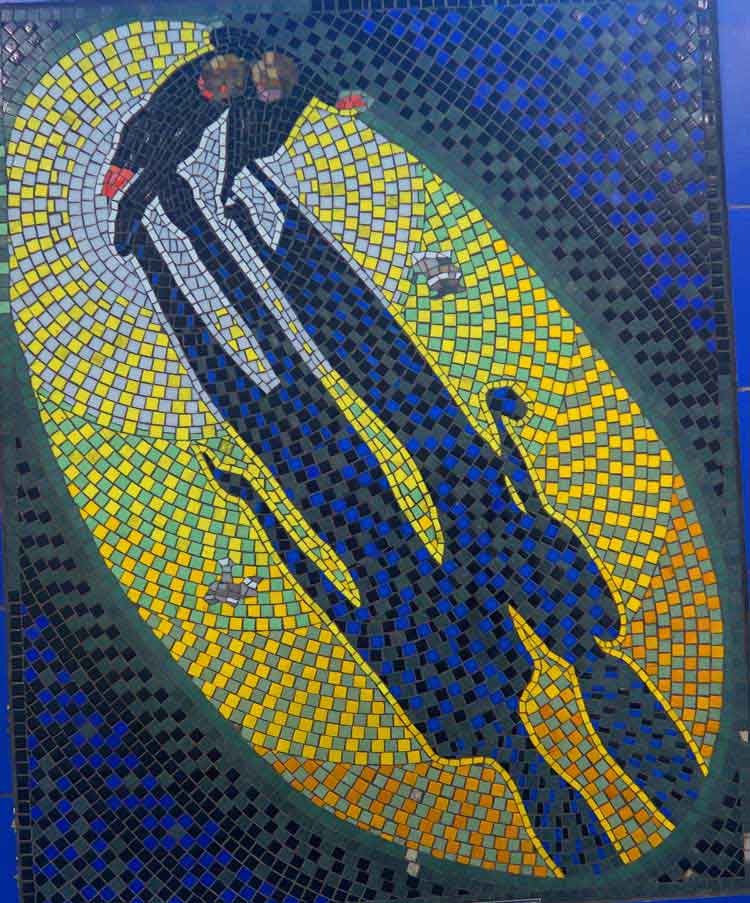
Joan Fontaine as the new Mrs De Winter struggling to escape the memory of her husband's first wife, Rebecca. Here, Mrs Danvers, Judith Anderson, will her to suicide. In the background is St John's Church. Leytonstone as it was in Hitchcock's childhood.
"You're overwrought, madam, I've opened a window for you. A little air will do you good. Why don't you go? Why don't you leave Manderley? He doesn't need you. He's got his memories. He doesn't love you - he wants to be alone again with her. You've nothing to stay for. You've got nothing to live for, have you, really? Look down there. It's easy, isn't it? Why don't you go. Go on, go on. Don't be afraid..." Mrs Danvers (Judith Anderson).
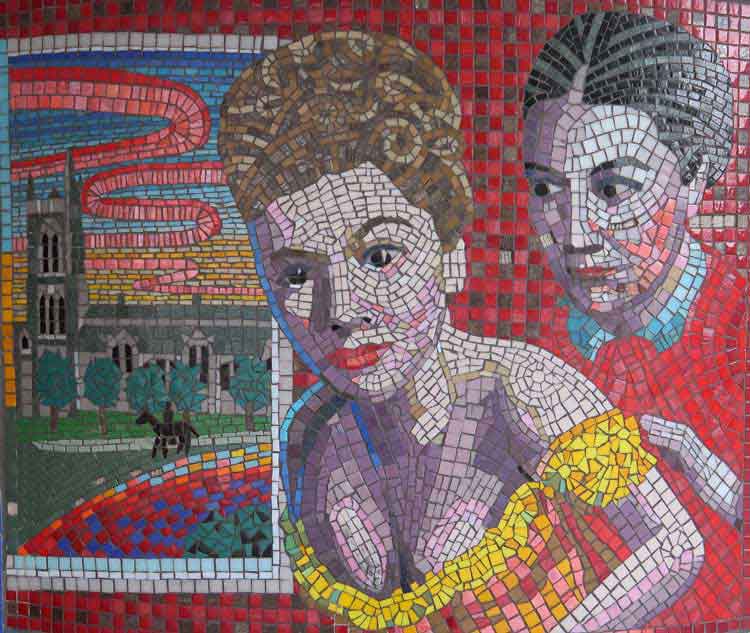
Hitchcock's bleakly realistic account of a real-life story has Henry Fonda as New York musician Christopher Emmanuel Ballestrero, mistakenly identified by the police as an armed robber.
"When I was no more than six years of age, I did something that my father considered worthy of reprimand. He sent me to the local police station with a note. The officer on duty read it and locked me in a jail cell for five minutes, saying, "This is what we do to naughty boys." I have, ever since, gone to any lengths to avoid arrest and confinement. To you young people, my message is - Stay out of jail!" Alfred Hitchcock.
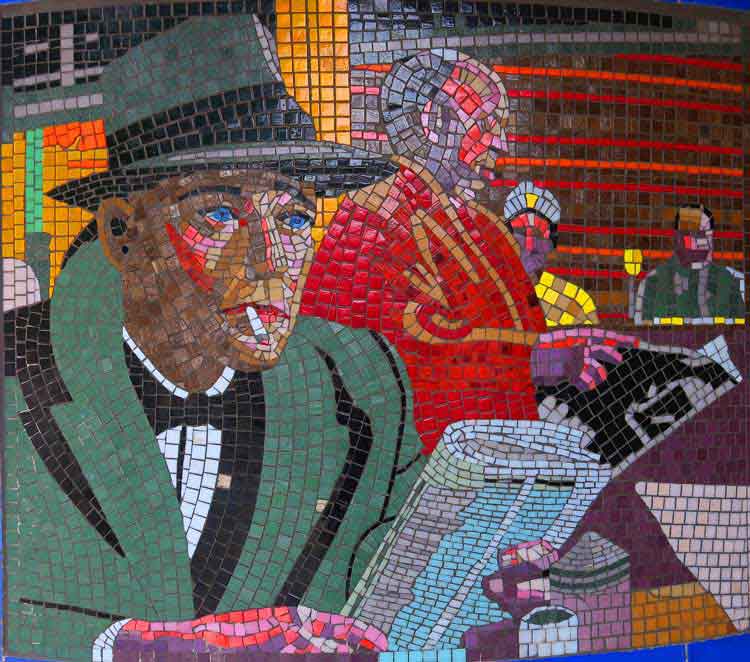
James Stewart as action photographer L B Jefferies is confined to his apartment by a broken leg. With the help of his fiancé Lisa Freemont, played by Grace Kelly, he begins to suspect that a murder has occurred and sets out to solve the crime.
"I've never seen Hitchcock look through a camera. Some directors never stop." James Stewart.
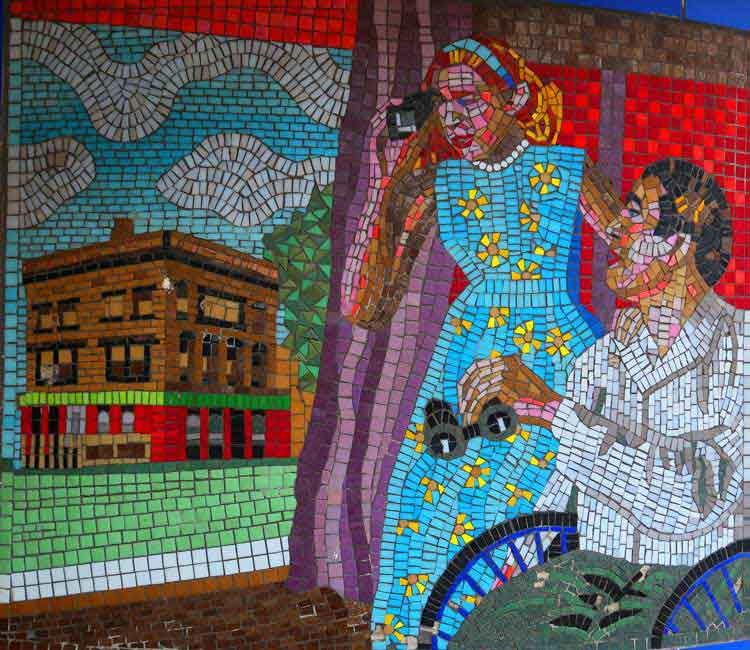
Marlene Dietrich, star of his 1950 thriller Stage Fright relaxes with Hitchcock off-set.
"Marlene was a professional star - she was also a professional cameraman, art director, editor, costume designer, hairdresser, make-up woman, composer, producer and director." Alfred Hitchcock.
